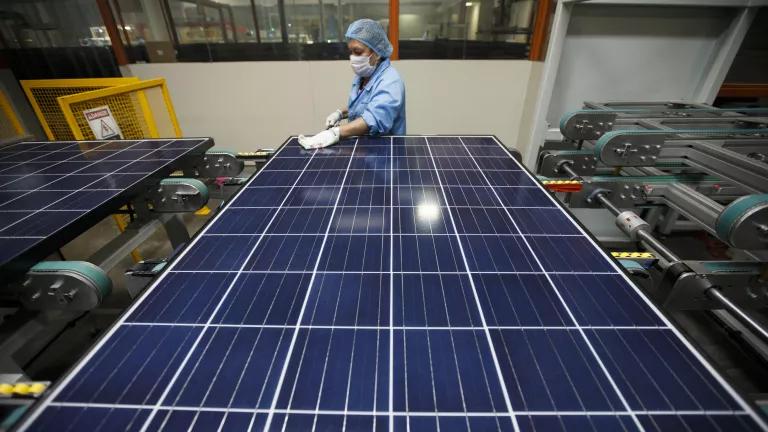Today, the California Public Utilities Commission adopted assumptions that fail to take advantage of energy efficiency’s full potential to displace the need for new fossil fuel resources. Omitting these energy savings could cost utility customers $1 to $2 billion in unnecessary power plants.
Although energy efficiency is the cheapest and cleanest resource to meet customers’ energy needs, the CPUC is heading into the New Year with a decision that relies on only a small amount of energy efficiency, missing the opportunity to displace more dirty power plants.
Today’s vote on final efficiency assumptions, which influences how many new power plants will be built over the next decade, contains two serious flaws:
- In developing its “base case,” intended to represent the state’s most likely future, the Commission relied on only half of the energy savings expected to occur in California over the next 10 years.
- It skewed the range of energy-saving scenarios to the low end, by adopting scenarios that use a range of: no efficiency to a mid amount of efficiency, instead of the normal range of: low amount of efficiency to a high amount of efficiency.
Therefore, the models won’t provide the Commission with reliable information on which to base its authorization of any new power plants.
Unrealistic Assumptions Could Cost Customers $ Billions in Unneeded Power Plants
The Commission’s decision relies on 3,000 megawatts of energy efficiency in the base case, which is the equivalent of six giant power plants. Instead, the CPUC should have relied on the California Energy Commission’s best estimate of the actual amount of cost-effective energy efficiency expected, which is equal to 11 giant power plants, or approximately 5,500 megawatts of energy savings.
As the difference between the red line and the blue line in the graph below shows, the CPUC voted today to undercount efficiency by approximately 2,500 megawatts. That could lead to the authorization of unneeded power plants, instead of relying on our state’s abundant energy resource that saves customers money and helps clean the air: energy efficiency.
Ironically, most of the undercounted efficiency savings are those that the CEC determined were “naturally occurring.” In other words, they’ll happen regardless of any future policies. Failing to rely on these significant energy savings could cost customers $1 to $2 billion if the Commission authorizes unnecessary power plants.
Skewed Scenarios Won’t Provide Reliable Information
Today’s decision requires analysis of three distinct energy demand forecast scenarios, all of which will have skewed energy efficiency assumptions, ranging from: (i) no energy savings from future programs and policies, to (ii) a low estimate of energy savings, and finaly to (iii) the CEC’s mid-case best estimate of energy savings in the “high efficiency” scenario (clearly a misnomer). Failure to use proper modeling of low-, mid-, and high- estimates of efficiency savings for the three scenarios will yield slanted results that make it difficult for the Commission to determine the actual need for new power plants.
Californians can’t afford for the CPUC to miss opportunities, like this one, to rely on cost-effective energy efficiency instead of fossil resources. When the Commission gets the results of its modeling next year and determines the need for new power plants, it must remember that its scenarios are weighted against energy efficiency and correct for this inaccuracy.
In the New Year, the CPUC’s best move would be to rely most heavily on the scenario that includes the actual amount of cost-effective energy efficiency that the state expects to capture over the coming decade. If it doesn’t, we could all pay for years to come, with unnecessarily high utility bills and unneeded power plants.


